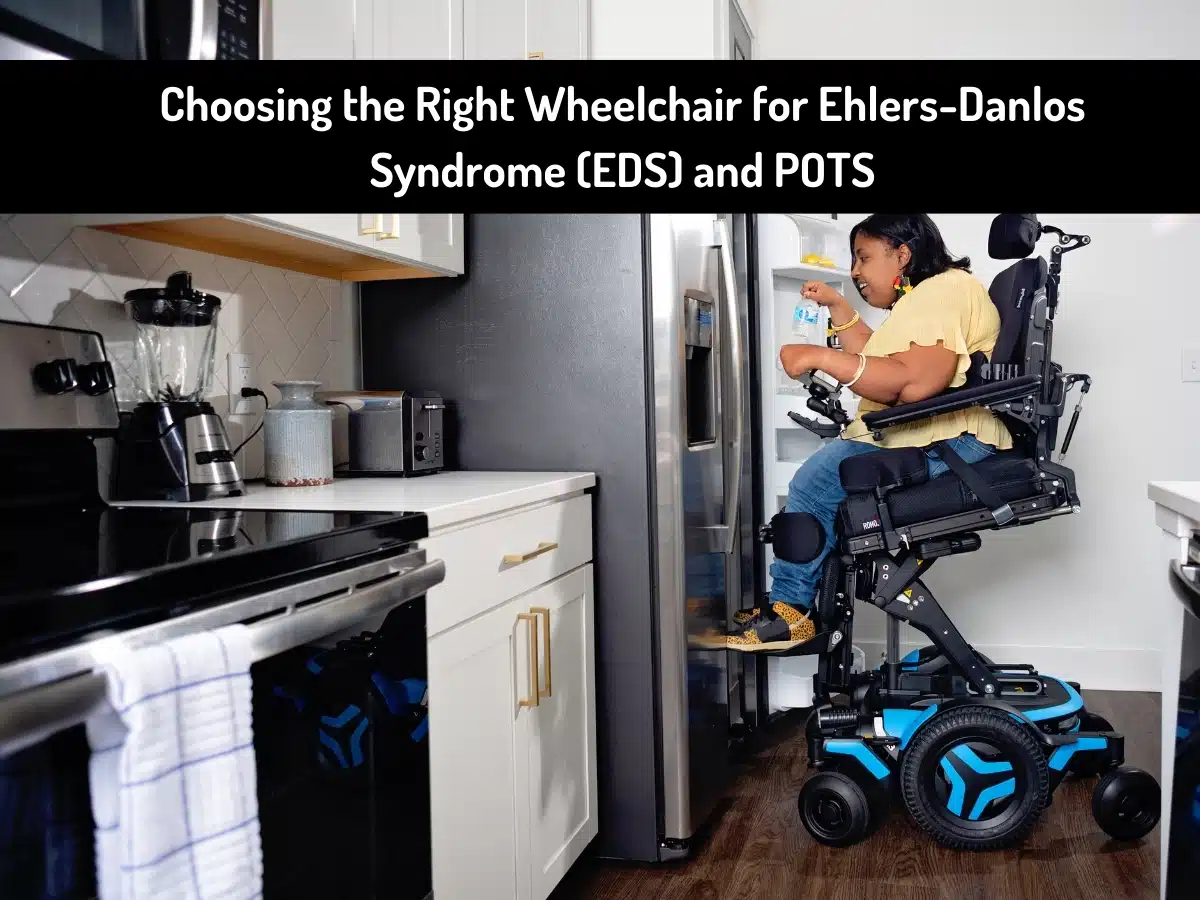Living with Ehlers-Danlos Syndrome (EDS) and Postural Orthostatic Tachycardia Syndrome (POTS) can make everyday life feel harder. For many, walking or standing for long periods is painful or even impossible. That’s where the right wheelchair can change everything.
If you have EDS, POTS, or both, you may struggle with fatigue, joint pain, dizziness, or low muscle strength. A manual wheelchair might not always work well, especially if using your arms makes your symptoms worse. In this blog, we’ll help you understand what to look for in a wheelchair that supports your health and lifestyle.

When Is a Wheelchair Needed for EDS or POTS?
EDS affects the body’s connective tissue. This can lead to frequent joint dislocations, weak muscles, and chronic pain. POTS cause your heart rate to rise quickly when you stand, making you feel dizzy, faint, or exhausted. Both conditions can limit how much you can walk or stand.
You might need a wheelchair if:
- You get tired very quickly.
- Standing causes your heart to race.
- Walking increases joint pain or causes dislocations.
- You’ve had surgeries that weaken your core or muscles.
If these symptoms affect your daily life, a wheelchair can help you stay safe.
Manual vs. Power Wheelchairs
There are two main types of wheelchairs: manual wheelchairs and power wheelchairs (Quantum Edge 3).
Manual Wheelchairs
Manual chairs are pushed by hand. They are light, foldable, and easy to store. But for people with EDS or POTS, pushing can be hard on the joints or cause fatigue. If you still have good arm strength and don’t flare up easily, a custom wheelchair with ultra-lightweight materials could work well.
Best for:
- People who have some upper body strength
- Short-term or occasional use
Power Wheelchairs
Electric wheelchairs, also called power wheelchairs, are motorized and controlled with a joystick. These are ideal for people with low strength, severe fatigue, or core weakness. If you’ve had abdominal surgery or if pushing a manual chair makes your condition worse, a power wheelchair is a better option.
Power chairs help conserve energy and reduce pain. Many people with EDS and POTS use them to avoid flares and keep moving safely.
Benefits include:
- Less effort needed
- Can go farther distances
- Easy to control indoors and outdoors
Custom Features for EDS Wheelchair & POTS Wheelchair
Not all wheelchairs are the same. A Custom EDS wheelchair can be designed to meet your specific needs. Here are some features to look for:
- Tilt or recline function – helps manage blood pressure and dizziness in POTS.
- Adjustable seating – supports joints and reduces dislocations.
- Padded cushions – prevent pressure sores and add comfort.
- Elevating leg rests – help reduce swelling in legs or feet.
- Back and neck support – for weak core muscles or fatigue.
Working with a provider who understands EDS wheelchairs and POTS mobility aids can make a big difference to your comfort and health.
POTS Mobility Aids
Some with POTS may not need a wheelchair full-time. Instead, they may use different POTS mobility aids like canes, walkers, or transport chairs. A lightweight wheelchair might be best for days when symptoms are worse.
Listen to your body. Some days are better than others. Having the right tool for each day helps keep you active and safe.
Talk to a Wheelchair Specialist
Choosing the right wheelchair isn’t just about wheels — it’s about living better with your condition. At Eclipse Mobility, we help clients across Utah find the best mobility solutions for their needs.
We understand the daily challenges of EDS and POTS. Whether you need a lightweight manual wheelchair, a fully custom power chair, or help with insurance, we’re here to guide you.
Final Thoughts
Living with EDS or POTS can be challenging, but the right mobility aid makes a big difference. Whether you need a custom wheelchair, an EDS wheelchair, or a POTS wheelchair, choosing the right solution can reduce pain and give you more freedom. Talk to your doctor and a wheelchair specialist to explore the best manual or power wheelchair for your needs.
A POTS syndrome wheelchair or EDS wheelchair doesn’t just help you get around—it gives you freedom, comfort, and independence.
Take the first step toward better mobility—contact us today for a personalized wheelchair fitting designed for EDS and POTS.
Q1: What type of wheelchair is best for Ehlers-Danlos Syndrome (EDS)?
A custom lightweight manual or power wheelchair with proper joint support and padding is ideal. Features like recline and tilt can also help reduce joint strain and improve comfort.
Q2: Can people with POTS benefit from using a wheelchair?
Yes. A wheelchair—especially a power wheelchair—can help manage fatigue and prevent fainting spells by reducing the need to stand or walk for long periods.
